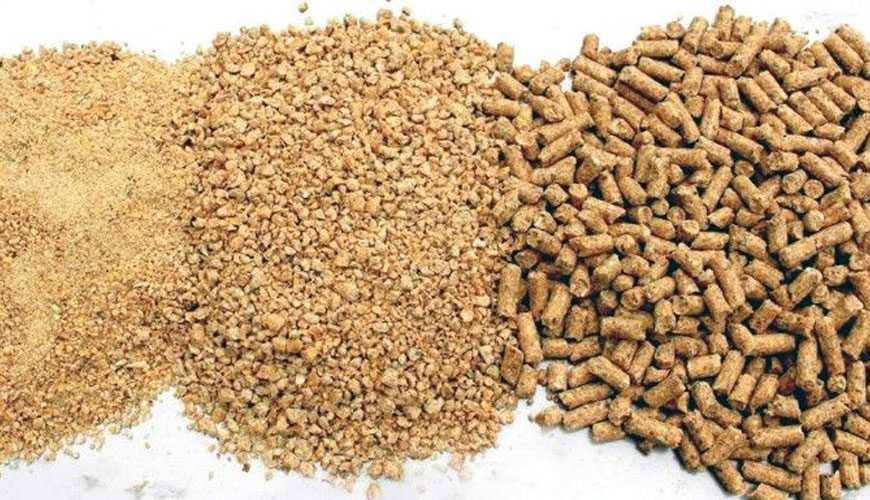
The demand for animal feed probiotic market is experiencing significant growth, driven by rising demand for sustainable and efficient animal farming practices. Valued at US$ 3,645 million in 2024, the market is projected to reach an impressive US$ 6,798 million by 2034, growing at a CAGR of 6.4% during the forecast period. This press release highlights key market drivers, consumption analysis, historical trends, and competitive landscape, offering valuable insights for investors.
The global animal feed probiotic market’s growth can be attributed to several key factors:
- Increasing Demand for Feed Additives: Probiotics are gaining popularity as consumers and farmers prioritize animal nutrition to improve health and productivity.
- Population Growth and Urbanization: Rising incomes and urbanization in developing countries have spurred demand for meat, dairy, and livestock products, necessitating efficient and sustainable farming practices.
- Reduction of Antibiotics in Animal Feed: Concerns about antimicrobial resistance have led to a reduction in antibiotic use, boosting the demand for natural alternatives like probiotics.
- Regulatory Support: Regulatory bodies worldwide are encouraging the use of natural and sustainable feed additives, increasing the acceptance of probiotics in animal nutrition.
Understanding the importance of nutrition in animal health and productivity has led to a surge in demand for animal feed probiotics. Consumers now prioritize livestock product quality, driving the demand for feed additives that enhance animal well-being. The global trend towards natural and sustainable farming solutions has made probiotics a preferred choice among farmers. Continuous research and development efforts are introducing innovative prebiotic products, further accelerating market growth.
The animal feed probiotics market has faced multifaceted impacts due to pandemics and market fluctuations. Supply chain disruptions have affected raw material sourcing and transportation, leading to temporary shortages and increased prices. However, consumer demand for high-quality, health-enhancing animal nutrition products has remained resilient. The market’s ability to align with evolving consumer preferences and adapt to economic conditions has been crucial for its sustained growth.
Despite the promising growth, several challenges could hinder market development:
- Competitive Market: The animal feed additives market is highly competitive, with various alternatives available to enhance animal health and productivity.
- Traditional Farming Practices: Convincing traditional farmers to adopt probiotics can be gradual, especially if they are skeptical about their effectiveness.
- Economic Fluctuations: Economic downturns may reduce farmers’ spending capacity, impacting investments in premium feed additives like probiotics.
- High Production Costs: The cost of producing and incorporating probiotics into animal feed formulations can be relatively high.
- Limited Awareness: Despite growing awareness of animal nutrition, limited education and awareness programs could hinder widespread adoption.
Comparative View of Adjacent Industries: The animal feed probiotics market faces competition from related industries such as animal feed additives and alternative protein markets. The animal feed additives market, with a CAGR of 2.0% from 2023 to 2033, is driven by the demand for protein food and antibiotic-free meat. The animal feed alternative protein market, with a CAGR of 7.5% from 2023 to 2033, benefits from growth in edible insect farming and environmental concerns.
Competitive Landscape: The global animal feed probiotic market is highly fragmented, with key players including Koninklijke DSM N.V., Alltech, Inc., Chr. Hansen Holding A/S, E. I. du Pont de Nemours and Company, and Evonik Industries AG. Recent developments include the Asia Pacific probiotics market’s growth and joint ventures in China focusing on gut health enhancement for farmed animals.
Category-wise Insights:
- Source: Bacterial-based probiotics dominate the market, holding a 55.1% share due to their eco-friendly solutions for promoting animal gut health.
- Animal: The livestock segment leads the market with a 34% share, recognizing probiotics’ role in sustainable and efficient livestock production practices.
Country-wise Insights:
- China: Leading the animal feed probiotic market with a 6.5% CAGR, driven by the swine industry’s demands and government initiatives.
- Japan: Projected to grow at an 8.0% CAGR, emphasizing advanced agricultural practices and animal welfare.
- United States: Anticipated to grow at a 5.1% CAGR, focusing on maximizing livestock productivity and food safety.
- India: Expected to grow at a 6.7% CAGR, driven by its significant milk production and growing poultry and livestock market.
- Brazil: Predicted to grow at a 4.5% CAGR, with a robust livestock industry and advanced nutritional strategies.
About Future Market Insights (FMI)
Future Market Insights, Inc. (ESOMAR certified, recipient of the Stevie Award, and a member of the Greater New York Chamber of Commerce) offers profound insights into the driving factors that are boosting demand in the market. FMI stands as the leading global provider of market intelligence, advisory services, consulting, and events for the Packaging, Food and Beverage, Consumer Technology, Healthcare, Industrial, and Chemicals markets. With a vast team of over 400 analysts worldwide, FMI provides global, regional, and local expertise on diverse domains and industry trends across more than 110 countries.
Contact FMI:
Future Market Insights Inc.
Christiana Corporate, 200 Continental Drive,
Suite 401, Newark, Delaware – 19713, USA
T: +1-845-579-5705
For Sales Enquiries: sales@futuremarketinsights.com
Website: https://www.futuremarketinsights.com
LinkedIn| Twitter| Blogs | YouTube